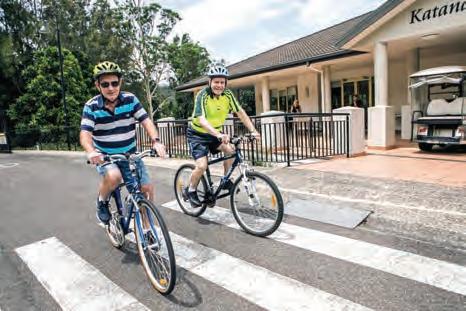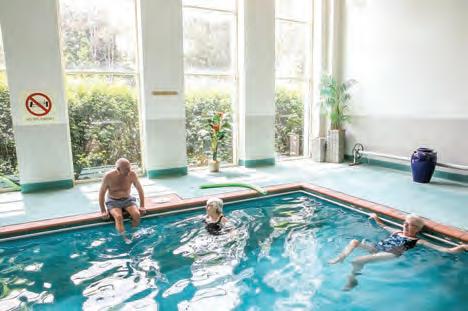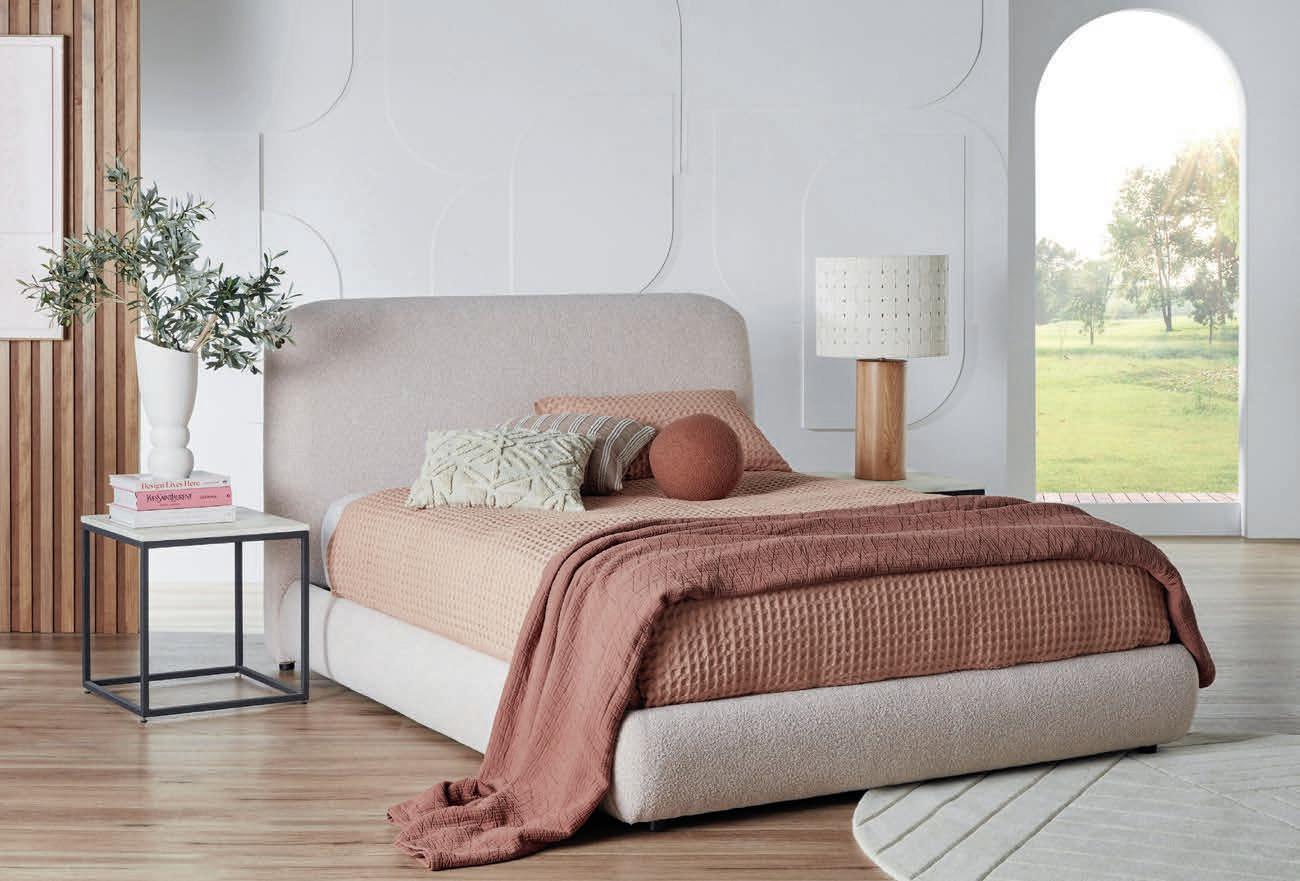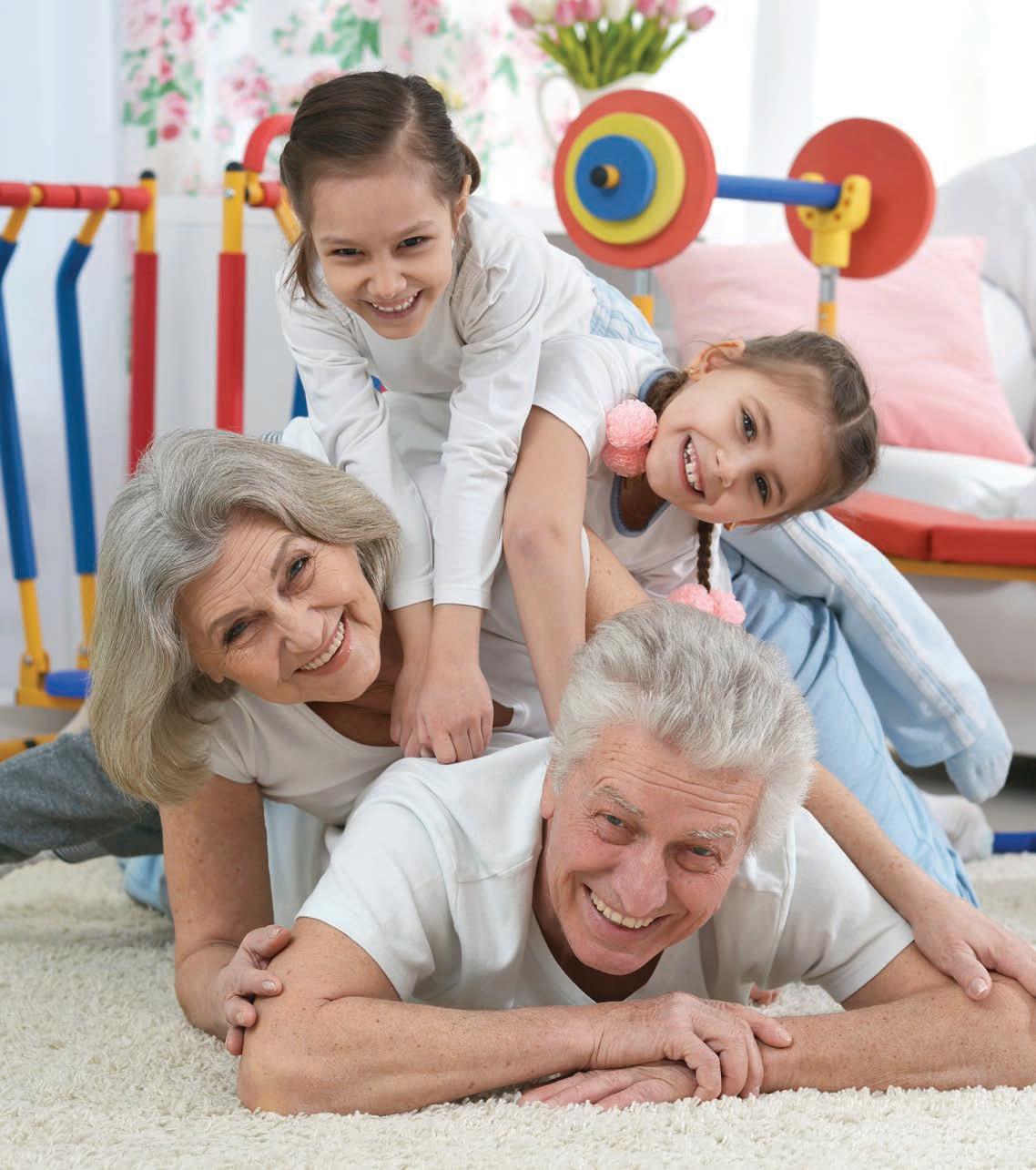










September is #MoveAgainstCancer month and this year, we at On the Coast Publications have entered a team in the September Step Challenge to help raise funds for this fabulous cause. Our family, like most have been directly touched by cancer, with members of our immediate family being affected by multiple variations of this terrible disease. We have seen firsthand the impact cancer can have and whole heartedly believe in Dr Ash Bowden, AKA Doctor Do–Mores philosophy that a healthy and active lifestyle can enhance one’s defences against cancer.
For years we’ve been exploring complementary approaches to our health alongside traditional medicines and are excited by the awareness and education that Ash is fostering through his #MoveAgainstCancer September Step Challenge. If you’re able to sign up and get behind Doctor Do–More and the Step Challenge you can read more about it in this issue or if you’re unable to do the challenge and would still like to donate you can support locals with a donation.
Also, this weekend is Father’s Day (Dad’s/Uncles and Grandfather’s day) so a massive shout out to all the dads, stepdads, uncles, grandpas and ‘father figures’ who are always there for us, we hope you know how special you are and have a wonderful day celebrating everything that is YOU. Plus, a big happy father’s day to my dad Stewart, who I am so blessed to have in my life. You are extraordinary human; my kids are so lucky to have you as their ‘Poppy’ – we love you; we adore you! If you would like to make a donation to #MoveAgainstCancer we’d love for you to support and donate to our On the Coast Publications team by going to http://domoresteps.com/events/move-againstcancer-2023/teams/on-the-coast-publications or scanning the QR code to take you to our team page. We’d love your support. Spring has sprung, and the days are getting warmer! So it’s time to head out and bask in the beauty that is the Central Coast!
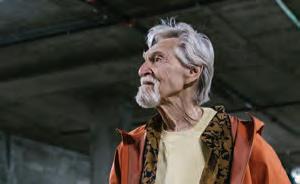
Love and light Coasties xxx
Art Director/Editor
Tanzie Carpenter tanzie@onthecoastpublications.com.au
Production
Luke Carpenter luke@onthecoastpublications.com.au
Publisher
Tanzie Carpenter / 0414 611 851
Luke Carpenter / 0405 449 339
trading as On the Coast Publications
ABN 52 212 212 482
PO Box 3251, Bateau Bay NSW 2261
For advertising enquiries advertising@onthecoastpublications.com.au
Warranty & Indemnity
For article contribution enquiries hello@onthecoastpublications.com.au

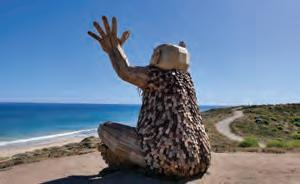
Imagery ingimage.com and freepik.com
Contributors
Sam Woods, Jordi Woods, Kathleen Albury, Sophie Doyle, Dorian Mode, Lydia Thorpe, Carin Clegg, Dr Nicholas Altuneg, Dr John Irvine, Jessica Sanford, Sarah Tolmie and Beth Field
onthecoastpublications.com.au
Advertisers and/or advertising agencies upon and by lodging material with the Publisher for publication or authorising or approving of the publication of any material INDEMNIFY the Publisher, its servants and agents against all liability claims or proceedings whatsoever arising from the publication and without limiting the generality of the fore–going to indemnify each of them in relation to defamation, slander of title, breach of copyright, infringement of trademarks or names of publication titles, unfair competition or trade practices, royalties or violation of rights or privacy AND WARRANT that the material compiles with all relevant laws and regulations and that its publication will not give rise to any rights against or liabilities in the Publisher, its servants or agents and in particular that nothing therein is capable of being misleading or deceptive or otherwise in breach of Part V of the Trade Practices Act 1974. The views expressed in On the Coast –Over 55 are not necessarily those of the editor or publishing staff. While every effort has been made to insure accuracy of the information in this publication, no responsibility will be accepted by On the Coast – Over 55. No part of this publication may be reproduced without permission of the publisher


Welcome to Coffee with a Coastie. I sat down with Elizabeth Long, who at 82 is still creating textile art. Recently Elizabeth has been making beautiful items from her left–over fabrics. Making everything from masks, to quilts and tea cosies. Over the years Elizabeth has won prizes in The Quilter’s Guild of NSW for her textile art pieces, though now Elizabeth simply wants to inspire others to pick up whatever it is that interests them later in life and start doing it. So it is with great pleasure that I got to sit down and chat with Elizabeth to share her story.
I’ve read that you are a Dutch–born Australian. Do you mind sharing where you were born and how you came to settle on the Central Coast?
I was born in Amsterdam during the war. My family migrated to Australia in 1947, and I grew up in Bronte Beach. After marrying again, and after a visit to the Central Coast, moved here in the late ‘90s.

I understand you took up textile art in the 70s. In the 70s, I was doing creative embroidery rather than the machining that I specialise in now. After being made redundant in the ‘80s, I joined TAFE to learn more. Inspired by Annemieke Mein’s work, I pursued three–dimensional soft sculpture.
What is it that inspired you to start using up your fabric stash a few years ago and how long had it been since you had created something before then? While I was in Sydney, a lot of my work was exhibited in boutiques and art galleries. Then when Noel and I moved to the Central Coast, that all stopped. So I started making other things and realised
people loved it because it was different to what other people were doing. But Noel was diagnosed with Alzheimer’s and he died in 2014 and I really didn’t do anything creative since then, because I felt very flat. Then during the COVID lockdowns, I turned to my fabric stash. In the past few years, I’ve made countless pieces, possibly more than before. As the pieces haven’t been as time consuming as those that were exhibited.
What advice do you have for those seeking creative outlets?
I don’t think you’re ever too old to do something, though things might slow you down. For instance, I had a car accident
three years ago, and it pinches my back nerves. I’ve also got carpal tunnel in my hands, so therefore I can’t knit, crochet or do things with my hands, which you would call handwork. But I’m bloody good on my sewing machine. It’s like an extension of my right arm. Nobody has said to me, you can’t do it. So I do.
What has been your most challenging textile project?
There has been many, though one is the outdoor installation of Annemieke Mein at The Peoplescape in Canberra in 2001.

What advice would you give to promote mental and emotional
wellbeing, especially as we get older? You need to mingle with and speak to other people. You don’t stop home and watch television and sit on your backside all day. You do things and it doesn’t really matter what. I love reading, but I couldn’t do it in the six years that Noel was sick. But I do it now. Though I won’t sit for more than one and a half hours. Because as we get older, we get too stiff, and we’re told don’t sit for a long time. So I try to do what I’m told.
Lastly, what would you say to someone who feels they may be too old to give something a go later in life. Have a go. Really, have a go.
I’d like to thank Elizabeth for inviting me into her home to share her story and to help inspire others to pick up a needle, a brush or anything for that matter that they are interested in later in life. I look forward to continuing to see Elizabeth’s creations across the Central Coast. This interview had to be edited for readability and length. So please be sure to scan the QR code or go to coffeewithacoastie.com.au to listen to the full interview.



Dry Eye is a progressive disease often made worse by cataract surgery and continues to get worse without treatment. If you are using eye drops regularly it is most likely you have Dry Eye.

SYMPTOMS INCLUDE –
n Itchy, sore, red or watery eyes n Stinging, scratchy or burning eyes n Blurred vision n Sensitive to light Our team of optometrists provide the only FDA & TGA approved treatment for Dry Eye Disease available worldwide, using IPL (Intense Pulse Light). We specialise in all aspects of Dry Eye, including blepharitis, by treating the root cause.
Coastal Twist LGBTIQ Arts & Culture Festival exploded onto the Central Coast scene in 2019 as a locally made, vibrant and original, festival which was unique to the Coast and fun for all.
Prior to 2019 the Central Coast was the only region in Australia in the top 15 largest (we are number 9) with zero national celebratory symbols for our large and local LGBTIQ population, our friends, families, neighbours and businesses, leaders, organisations and innovators all wanting to push for a more equitable local region tackling the broader negative perceptions of the region. With 800 expected and over 7,000 showing up, the festival has continued to grow from strength to strength, last year hosting over 9,500 people and completely sold out across 7 days and 15 events.
This September 26 – October 2nd welcomes the festival back for its 3rd incarnation in what has become the Coast’s glitteriest week of the year with 7 days of jam–packed surprises, playful and profound fun and learnings with LGBTIQ Arts & Culture from across our region, our state and our country as artists, thinkers and innovators all come together to present work that simultaneously entertains and expands our worlds, our understanding of resilient communities and our possibilities as a region as one which is equitable, welcoming and original, cooking up our own brand of quirky, coastie, kitsch.
The 2023 year’s Festival theme
“Inclusion means you” is a call for everyone across the Coast and beyond to join us in nurturing a culture of respect for a happier, healthier, and more welcoming Central Coast.”
Festival Director Glitta Supernova states.
Multiple Central Coast hubs will come alive with free and ticketed events to suit all ages and abilities across Woy Woy, Ettalong Beach, Gosford & Umina Beach with cabaret, live music, film, dance parties, youth and senior activations, art exhibition, workshops, wellbeing hub and even bingo. The shining jewel of the festival, the Coastie Carnie Fair Day on Sunday 1st Oct, will be featuring headliner live music and performance artists alongside locals with all day Entertainment, a Market with makers, local businesses, orgs, Food and beverage, peaking with the now iconic Puparazzi Pooch Parade across the free outdoor event.
This year we return with the popular Foxy Silvers 55+ picnic. Build friendships and community connections and be part
of the buzz and vibrancy of our annual festival in a lo–key way. Come on your own or bring your mates!
“Foxy Silvers” is a Coastie 55+ social club for people of diverse sexualities and genders (LGBTIQA+) to empower older (LGBTIQA+) people to lead rich and stimulating social and cultural lives, while creating new friendships and building community connections. The goal is to build community through social, cultural, and creative programs and events.
This festival is for everyone with over 55% of the programming all ages and 65% of events free. There are activities and entertainment for everyone, regardless of how you identify and this festival is about promoting and celebrating the beauty of diversity across the natural world.
FRIENDSHIP AND COMMUNITY CONNECTIONS @ OUR COASTAL TWIST FESTIVAL FOXY SILVERS
PICNIC IN KIBBLE PARK, GOSFORD
55+ ANNUAL PICNIC
“In times as polarising as these, Inclusion Means You encapsulates the ethos that everyone deserves to be heard, valued, and welcomed with respect.”
Full schedule of events as well as RSVP for free events and ticket purchases, giveaways, prizes, raffles, and opportunities www.coastaltwist.org.au
Join us as part of the buzz and vibrancy of our Annual Coastal Twist LGBTIQ Arts & Culture festival. Bring a rug, some nibbles and lunch – BYO and if you’re feeling generous a plate to share.
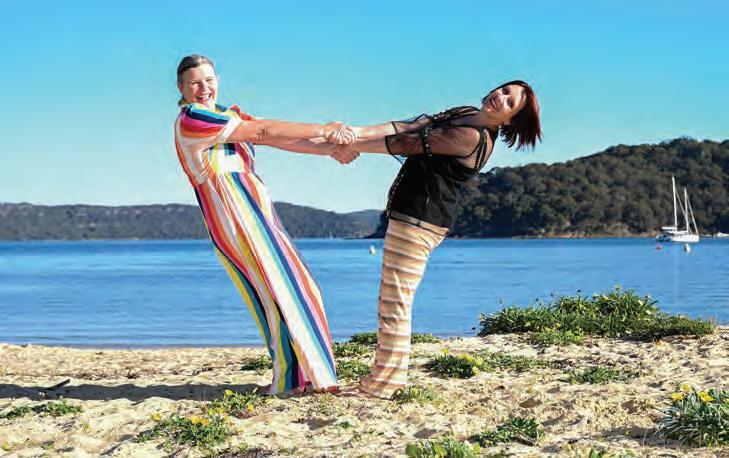
REGISTER AT
www.coastaltwist.org.au/event/ foxy-silvers-picnic-in-the-park/
TUES 26 SEPT - MON 2 OCT 2023
TUES 26 SEPT - MON 2 OCT 2023

COASTIE CARNIE FAIR DAY LIVE MUSIC EXHIBITION MARKETS
COASTIE CARNIE FAIR DAY LIVE MUSIC EXHIBITION MARKETS
WORLD FOOD POOCH PARADE CABARET PERFORMANCE
WORLD FOOD POOCH PARADE CABARET PERFORMANCE
FILM DJ'S YOUTH EVENTS
FILM DJ'S YOUTH EVENTS
DRAG BINGO DANCE PARTY COASTALTWIST.ORG.AU
DRAG BINGO DANCE PARTY
Don’t wear your shorts too long if you have a long upper body. This could make you look and feel “squatty”. Instead opt for a shorter length short and a top that finishes just below your stomach
Sure many men may not be as caught up in what is “trending” or needing something “new” as much as some of our female clients may, but this doesn’t mean the guys don’t want a wardrobe full of items they can throw on and feel fabulous in for every occasion.
Even though the media may not target the guys and play on their image insecurities as much as they do women, men still have societal pressures to look and feel a certain way too. Add to that most men aren’t “shoppers” (see fact below) then it is no wonder getting dressed can just get too hard leaving them to revert back to their old and faithful tee and shorts that has served them for the last decade!
DID YOU KNOW…Over 80% of purchases and the influence over a purchase is made by women!
Now before we go further…this is not an article where we want to generalise, so if you are a male or identify as one and you happen to love shopping and putting outfits together then we hope the below tips can broaden your fashion and dressing skills or at least give you some fresh ideas!
However, if you are a male or identify as one and shopping and dressing can be a chore or something you aren’t confident doing we hope our “stress free style” tips can take some of the hard work out of these tasks and leave you feeling good next time you have to reach into your wardrobe.
When we style our male clients we like to keep it short, sweet and straight to the point. Our experience has shown us that the boys just love to “get the job done” with as little fuss as possible so we have done the same with our following tips;
Be aware that shoulders in suit jackets, tees and shirts sit in line with your shoulder. You don’t want them to sit too wide or too narrow, ill fitting garments are a bad distraction and won’t feel comfortable
If you have a bit of a tummy, don’t hide under too much fabric. TIP: opt for shirt styles that have shaping in the back not a tuck or pleat. As this will contour and create shape to the body, not add extra bulk
If your style is carefree and casual, look at updating your shoes each season. TIP: opt for a slide instead of thongs or a coloured lace up sneaker instead of a boat shoe
To make your legs look longer, match your pants to your shoes and socks e.g. black pants, black shoes and socks or navy pants, black shoes and socks
If you have a funky/quirky style and your body balance allows, swap a black shoe for a tan shoe with your navy pants
Don’t be afraid to cuff up your jeans if it suits your body balance and team them back with Birkinstocks for a coastal look or a sneaker for a casual look
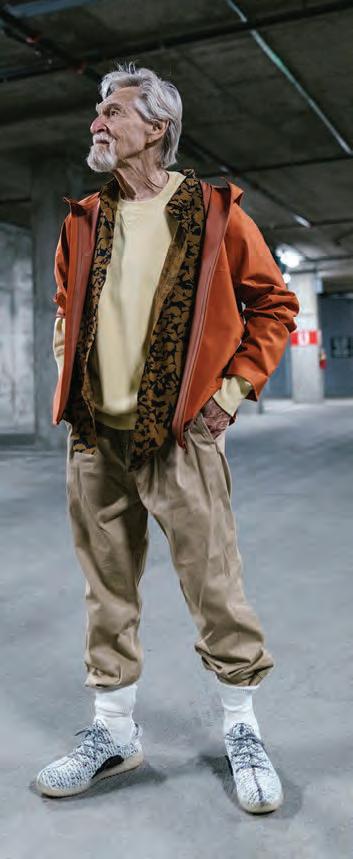
Try a linen button thru shirt instead of a tee for a relaxed casual outfit with jeans or shorts
Experiment with different types of hats e.g caps, fedoras, bucket hats to add interest and a new look to your basic wardrobe items
If you are not a shopper always buy quality over quantity to ensure items last season after season. This will mean you can shop less often but not have to sacrifice your style
To minimise ironing, hang tees on padded hangers opposed to folding them
Layering a linen shirt over a tee with a pair of chino shorts and a smart
casual sneaker is a great way to not be too under–dressed or over–dressed for those times when an appropriate dress code isn’t defined
Let your style show through with graphic tees, necklaces, wrist wraps
Don’t go too small in your clothes or tight in your clothes. It can be a bad distraction if pockets are pulling or jackets won’t button up easily
Have a colour theme to your wardrobe, this will ensure everything mixes and
Our experience as stylists has taught us that when shown how to, guys love to feel confident and good in what they wear just as much as our female clients.
“
Even though the media may not target the guys and play on their image insecurities as much as they do women, men still have societal pressures to look and feel a certain way too
matches (it can also help those who are colour blind). For example black, white, navy, red for a strong, cool palette or khaki, navy, tan, cream for an earthy, warm palette
If you do like to play with your clothes, stick to the Three Colour Rule i.e don’t wear more than three colours at one time (a coloured pattern tee is classified as one colour!)
As an alternative to a denim jean you could try opting for a cargo pant or linen pant for a weekend or relaxed look
Swap out your classic black or white tee for a colour or print one!
Try other colours than blue for your denim jeans and jackets. For example white, black, khaki or chocolate. These new shades will also work back with your blue denim if “double blue denim” is too much for you

If it is flattering to your body shape try tucking shirts or tees into your pants,
jeans or shorts and accessorise with a nice belt.
We hope these tips and some of the images we have selected help take the

stress out of getting dressed or have given some new ideas of ways to approach your style.

Vibrantly yours, Sam & Jordi Woods xx
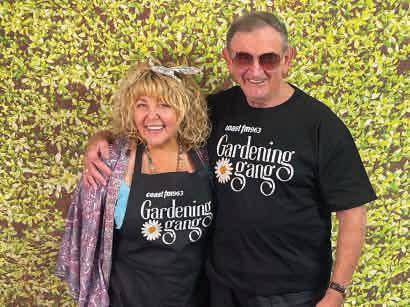
Understanding styling and fashion is one thing. Having a super natural flair for making everyday people look incredible is another. Once you’ve met Sam & Jordi Woods, it’s hard not to catch their infectious passion for dressing to match your own lifestyle, personality and charisma. Through their consultancy ‘Vibrant Concepts’, Sam & Jordi have transformed the lives of thousands. Let Sam & Jordi show you how to look and feel fabulous everyday at their Style Studio in Erina – learn the art of illusion dressing, colour matching, styling, translating fashion trends and savvy shopping with their unique VC Signature Styling Systems and services that are truly personal and really work! To contact Vibrant Concepts phone 0425 221 676
Are you sick of sitting at home by yourself over Christmas? Come and join with your tour friends as we explore the Bathurst Region with all its interesting history and charm. We have already told Santa where you will be so you won’t have to stay home to wait for him !
Take
Discover Tasmania with a great mixture of historic sites, cruising on wild Bass Strait and the tranquil rivers. Be awed at Cradle Mountains scenery and enjoy the bustle of Tassie cities all in one tour.



Port Arthur Cataract Gorge
Dove Lake
Gordon River Cruise
‘The Nut’ Stanley

THE BAD NEWS: intense heatwave headlines from around the world. In Australia, July 2023 was the hottest July on record. And a predicted El Nino means that we’re in for drier, hotter weather for the next few years.

THE GOOD NEWS: you can reduce the heat in your home (and your reliance on air conditioning and electricity) with smart shading. Premier Shades, your experts in home shading, are here to help. We understand the science behind shading.
FACT: most heat gain in summer occurs through your windows. But, more good news, external shading can block up to 80% of the sun’s summer heat gain through windows.
The classic Queenslander house is a great example of how to manage cooling in our climate, with wide verandahs creating shade to keep the sun off glazing and to catch the cool breeze. These
outcomes are achievable in your home with clever placement of blinds, shutters and awnings.

Jessica Hawksley, Premier Shades General Manager, says: “the science of shading is critically important. Our
Premier Shades consultants consider your home’s orientation to the sun (ie east and west facing glazing is hottest), prevailing winds (ie sea breeze is prevailing in summer), and where you like to spend your time indoors and out”.
“With that knowledge, our consultants can help you design solutions and take advantage of natural climate elements to keep your home cool. Our consultants know which products, fabrics, colours, and stylish designs will create the optimal solution for your home” says Jessica.
External awnings and blinds are best to keep the sun off windows and doors but must allow for ventilation with the outside of the window or door glazing. If the shading is fitted too closely, air trapped between the shade and window/ door will heat up and conduct heat into the room. This can be worse than no treatment at all.
For example, a closed aluminium roller shutter will trap air and create much more heat transfer than a pivot–arm or auto–lock arm awning that is angled away from the window. The gap allows the prevailing breeze to move warm air away from the window keeping your home cool. Fabric and colour choices also make a difference, for example, light coloured canvas is cooler than darker coloured PVC fabrics.
If an external awning isn’t practicable, or you just don’t want one, there are good internal solutions to keep your house cool. Jessica suggests: “lighter coloured fabric and layers and thickness
are important like dual roller blinds. Curtains and plantation shutters are also very good internal solutions, allowing you to keep windows and doors open to catch the breeze while keeping out the hot sun.”
Plus, Jessica says, “in our experience, adding automation will ensure that you actually use the shading qualities of your blinds, shutters and awnings, whether you’re at home or out”.
Premier Shades products are custom made to your exact measurements. We offer a free in–home consultation service, and we can give you options that suit your needs, style and budget best.
Specsavers Advance, our very own range of hearing aids, are packed with the latest technology and a choice of features you would expect without the price tag to match.
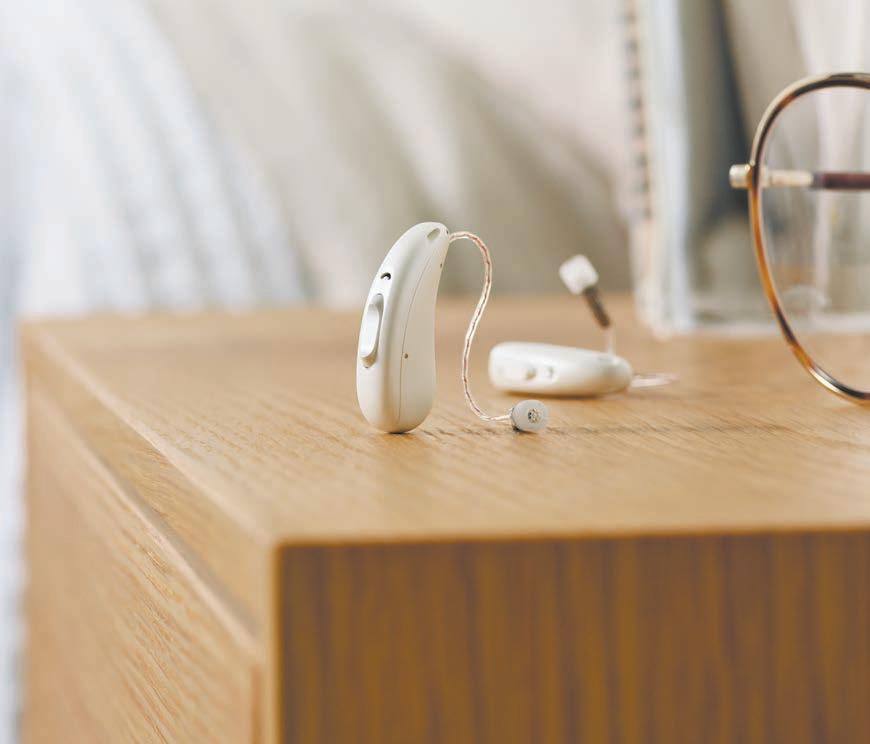
Stream music and calls directly from your phone
Enhance speech in noisy environments
Discreet fitting style options at no extra cost
To view our everyday low prices upfront visit specsavers.com.au/hearing
Fair Shopping Centre
Drive, Erina, NSW 2250
“ most heat gain in summer occurs through your windows. But, more good news, external shading can block up to 80% of the sun’s summer heat gain through windows
Why would the process of selling my house help me with downsizing? Well the two go hand in hand. Most people usually need to sell their main home in order to downsize and it is through this process that we start to take the first steps towards the future.


Downsizing can become very daunting and overwhelming which is why a lot of people tend to put it off. There are some tips that I give people when they begin this process. Most don’t think about it, but when we are preparing to sell we wind up doing all the work prior to going on the market and once that is done, the rest is smooth sailing.

Generally, the majority of this is done when we are “prepping” our houses for sale and actually works to make the future move so much easier. When I go to someone’s home and they are thinking of downsizing, I know this is a stressful time and I try to make it as stress free as possible.
These are some of the steps that I discuss when I go to clients’ homes, making their upcoming move that much easier.
STEP ONE
Get the kids involved if you can. It is almost inevitable not to still be storing some of the kids’ belongings that have been left in the home over the years. Having the kids decide what they would like to keep and what they would like to throw out is a great start. The other things to ask the children is whether they would like to keep anything in the house for themselves. When downsizing, we need to get rid of everything that won’t be going into the next property. This includes antiques, larger furniture and often a few bedrooms’ worth of furniture. This is also the time to tell the kids to take anything that they want for the future, as everything will be getting thrown out or donated.
Donate, donate, donate. This may seem like an obvious one, but you may be
surprised to know that a lot of charitable organisations often won’t take our antiques, beds, and a lot of other furniture. They are very specific as to what they will take. To put it bluntly, if they can’t sell it they won’t collect it. Ask a representative to come over to the house, have a look and they will tell you what they will be able to take off your hands.
Arrange council pickups or a skip bin. Depending on how much is left after the kids and charitable organisations have come through will depend on whether it is easier to get a skip bin or just do a few council pickups.
After all this has been done, you are left with the furniture and belongings that you wish to take to your new home. I tell people to just put all these items in the garage. A common question asked regarding this advice is, ‘Won’t buyers want to see the space in the garage”? The short answer is no. Buyers can imagine a garage and what it looks like, but they need to see the space inside the house in order to make an emotional decision to buy the property. I always say that buyers
are buying space, so the goal is to create as much as possible. We do that by following the steps above and packing everything up and putting it into the garage.
So once the house is sold all the hard work has already been done. All you need to do is open the garage and let the removalists take it all to your new home. If you don’t have a garage, we can always find the space. I have even had clients use friends’ garages or rent a storage locker for a short time.
As an expert in helping others with this process, I know the first step is literally to just get started and the rest will all fall into place. Grab a few boxes and get ready to see what the future brings.
Downsizing can become very daunting and overwhelming which is why a lot of people tend to put it off
Canton Beach Sports Club has been a part of Central Coast Life since 1961.
Experience the hospitality, enjoy an ice-cold beer on tap and you can eat at the fabulous WOK Malaysian restaurant whose combination of Malaysian cuisine & Western dishes is guaranteed to get your taste buds talking!
The newly revamped Sports Bar offers an immersive space to watch the latest live sport.
Experience the hospitality, enjoy an ice-cold beer on tap and you can eat at the fabulous WOK Malaysian restaurant whose combination of Malaysian cuisine & Western dishes is guaranteed to get your taste buds talking!
Experience the hospitality, enjoy an ice-cold beer on tap and you can eat at the fabulous WOK Malaysian restaurant whose combination of Malaysian cuisine & Western dishes is guaranteed to get your taste buds talking!
The Club offers quality live entertainment free of charge every Friday and Saturday night as well as its very popular weekly cabaret show from 11am every Thursday. There’s Club Bingo Monday to Wednesday at 11am plus a host of weekly raffles.
The Club offers quality live entertainment free of charge every Friday and Saturday night as well as its very popular weekly cabaret show from 11am every Thursday.
A Courtesy Bus is available for pick up and drop off between Wednesday and Sunday each week.
A Courtesy Bus is available for pick up and drop off between Wednesday and Sunday each week.
A Courtesy Bus is available for pick up and drop off between Wednesday and Sunday each week.
Canton Beach also has a highly competitive Bowls programme on its three greens with over 120 active Bowling members. The Club is one of the strongest and most active throughout the Region and has enjoyed great success over the years.
There’s Club Bingo Monday to Wednesday at 11am plus a host of weekly raffles.
The Club offers quality live entertainment free of charge every Friday and Saturday night as well as its very popular weekly cabaret show from 11am every Thursday. There’s Club Bingo Monday to Wednesday at 11am plus a host of weekly raffles.
Canton Beach also has a highly competitive Bowls programme on its three greens with over 120 active Bowling members. The Club is one of the strongest and most active throughout the Region and has enjoyed great success over the years.
Canton Beach also has a highly competitive Bowls programme on its three greens with over 120 active Bowling members. The Club is one of the strongest and most active throughout the Region and has enjoyed great success over the years.



If you are a seasoned competitor, new to the area, someone looking to get back into the game or thinking of taking up the sport for the first time, there is a spot suited to you at Canton Beach Sports Club.
If you are a seasoned competitor, new to the area, someone looking to get back into the game or thinking of taking up the sport for the first time, there is a spot suited to you at Canton Beach Sports Club.
If you are a seasoned competitor, new to the area, someone looking to get back into the game or thinking of taking up the sport for the first time, there is a spot suited to you at Canton Beach Sports Club.
Phone Club 4393 7291 | Bowls 43937295
Phone Club 4393 7291 | Bowls 43937295
Address Hibbard Street, Toukley
Address Hibbard Street, Toukley
Web cantonbeachsports.com.au
Web cantonbeachsports.com.au
Home care is increasing in popularity for older Australians as an alternative to residential care. This is because your client can choose where to live – either at home or in a retirement community or perhaps with the kids – and the care they need will come to them.
But with popularity comes some downsides – demand for home care packages exceeds the number that have been made available. Once you are approved for a package, you will go on the waiting list until funding becomes available. This could be a wait of 3 months or longer.
About 235,000 older Australians receive help through a home care package, with around 43,550 packages released in the December 2022 quarter. Most people waiting are receiving Commonwealth Home Support Package services, so they have access to some support while waiting.
Home care is increasing in popularity for older Australians as an alternative to residential care. This is because your client can choose where to live either at home or in a retirement community or perhaps the kids
But with popularity comes some downsides demand for home care packages exceeds the number that have been made available. Once you are approved for a package, your client will go on the waiting list until funding becomes available. This could be a wait of 3 months or longer.
About 235,000 older Australians receive help through a home care package, with around 43,550 packages released in the December 2022 quarter. Most people waiting are receiving C ommonwealth Home Support Package services, so they have access to some support while waiting.
Population impact
Access to care at home may help delay or even negate the need to move into residential aged care but it generally requires good family/friend support networks in the home to provide ongoing support.
Government subsidised home care services are offered through two programs:
Australia’s population is projected to increase to more than 38 million by 2060 (from approximately 25.8 million today) which will place greater strain on transport, infrastructure, housing, education, health and aged care services (including both home and residential aged care).
Australia’s population is projected to increase to more than 38 million by 2060 (from approximately 25.8 million today) which will place greater strain on transport, infrastructure, housing, education, health and aged care services (including both home and residential aged care).
The population will also age significantly over this time which means more people will likely need to access health and aged care services. The number of people aged 75 years and over is projected to increase by about 4 million between 2012 and 2060.
The need for more aged care services, the desire of people to remain in their own homes, and people living longer creates challenges for the aged care industry.
In–home care may enable people to remain living in their homes as long as possible by allowing them more choice, control and easier access to a range of services that can be tailored to their specific needs.

Commonwealth Home Support Program (basic care) – CHSP
Home care packages (basic to high level care) – HCP
The population will also age significantly over this time which means more people will likely need to access health and aged care services. The number of people aged 75 years and over is projected to increase by about 4 million between 2012 and 2060.
All governments, $’000 per person, 2011–12
All governments, $’000 per person, 2011 - 12
About 235,000 older Australians receive help through a home care package, with around 43,550 packages released in the December 2022 quarter
There is also the option to purchase privately funded services.
The Commonwealth Home Support Program (CHSP) offers a range of entry–level home care services that can be provided to clients living in the community – be it in their own home, in a retirement village, or living with their children (or other family members).
These services are subsidised by the government on a grants basis to the provider. Clients may be asked to contribute towards the cost, with the fees set and negotiated by the provider.
The purpose of the CHSP is to help people live independently and safely in their home. It does this by providing help with daily tasks. The program aims to work with the client to maintain their independence rather than doing things for them. If needs are more complex, a
home care package can provide more assistance and provide a range of support services tailored to specific needs.
CHSP services are provided by a range of organisations including community services, local government, religious groups, or private commercial operators.
Home care packages provide those in need with a greater level of support than the CHSP.
A home care package is generally for a person who would not be able to live at home without care. They provide a co–ordinated package of services tailored to meet more complex care in–home needs. These services include:
personal care
support services
clinical care
home modifications. Services can be provided in the person’s own home, including retirement villages,
rental accommodation, group home or living with children/family members. The packages are offered by a range of not–for–profit and commercial organisations. They are government subsidised, so approval is required from an ACAT/ACAS to receive a package.
If you need assistance or would like to discuss ways to fund your home care options, I can help you. The services I offer include calculating home care fees and providing advice on how to structure your assets to meet your cash flow needs, while protecting the value of your estate. Call our office on 02 4325 0884 to see how we can help you.
Morgans Financial Limited
1/6 Burns Cres, Gosford morgans.com.au/gosford
Sophie Doyle (AR#000470612) is an Aged Care Specialist at Morgans Financial Limited (Morgans AFSL 235410 / ABN49 010 669 726); with a passion for assisting people make informed financial decisions, as they navigate their way through retirement and aged care. Disclaimer: While every care has been taken, Morgans Financial Limited makes no representations as to the accuracy or completeness of the contents. The information is of a general nature only and has been prepared without consideration of your individual objectives, financial situation or needs. Before making any decisions, you should consider the appropriateness for your personal investment objectives, financial situation or individual needs. We recommend you see a financial adviser, registered tax agent or legal adviser before making any decisions based on this information. Current at 30 June 2023.
each day. If we reduce our usage by the equivalent of three buckets each day, we will easily meet the 150–litre target”.
their homes and businesses.
We collect this water from a variety of catchment areas which are owned and maintained by Central Coast Council.
Central Coast Water and Sewer are asking residents to be water–wise and stick to 150 litres per person, per day.
Director of Water and Sewer
Jamie Loader confirmed Council’s commitment towards future–proofing our water assets.
“We’re committed to ensuring there is plenty of water for the future, regardless of whether we’re in a drought or receiving regular rain. If we each aim to use less than 150 litres per person per day, our dams will stay fuller for longer.”
“On average, every Central Coast resident uses approximately 180 litres
“To help our community achieve this target we have updated our ‘Love Water’ website to include tips and tricks to conserve water throughout the household, including a water calculator which estimates your daily water usage.”
Central Coast Council Administrator Rik Hart encouraged the community to get involved and be water–wise.
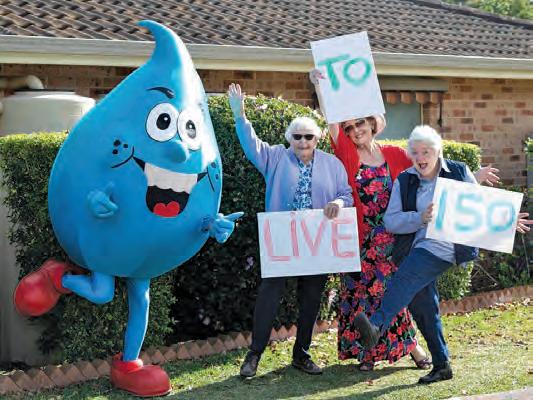
“With rainfall expected to decrease, the Central Coast is likely to experience drier conditions as we come into warmer seasons.
“The new ‘Love Water’ website has tips on how to save water both inside and outside of the household as well as
identifying water–wise rules across the whole community.
“We are challenging the Coast to use less water and stick to 150 litres per day.”
For more information on how to be a water wise warrior, including tips and tricks, water rules and access to the water calculator, go to: lovewater.centralcoast.nsw.gov.au
Across the region, Central Coast Water and Sewer supplies around 80 million litres of drinking water to more than 350,000 people in
We embark on a captivating road trip through the enchanting Margaret River wine country, extending all the way to Albany in Western Australia.
After picking up our rental at Perth Airport, we head straight to Novotel on Murray St, a sleek new hotel in the heart of Perth. Mrs. Pictures and I do enjoy a refreshing swim after a flight, so we lounge in the rooftop pool like beetles floating on their backs, with fragrant frangipani trees surrounding us. We can feel the excitement building up as we soak in the chlorinated waters, knowing that our road trip from Perth to Albany awaits.
Once dry, we set our sights on Cottesloe Beach, a coastal gem that reminds us of Bondi but with free parking. Remember finding a park in Bondi? Surprisingly lively, it has the hustle and bustle of Manhattan, especially with the final day of the Sculptures by the Sea event in full swing. We weren’t expecting this! We fully immerse ourselves in the art scene and later treat our taste buds to a tantalising meal at Indigo Oscar. This Latin American treasure not only serves up delicious cuisine but also impresses with its breathtaking location. It’s like having Rockpool transplanted to a Bondi... well... rock pool. We sit back with our cocktails, watching swimmers basking in the warm embrace of the Indian Ocean against a sky painted like a Tequila Sunrise. But for those on a tighter budget, a simple fish and chips feast on the beach at sunset would be just as satisfying.
The next day, we venture south to Halls Head, eager to see the imposing
Mandurah Giant. This woody sculpture, majestically crafted entirely from pallets, stands tall and proud amidst the coastal landscape. As we stroll through the white sagebrush, the undulating terrain blurs the boundaries between earth and sea, creating a ambiance that reminds us of the Australian rendition of the Rapanui Moai statues.

Our next stop is ‘bustling Busselton’, where we treat ourselves to lunch at Shelter Brewing Co. This unique establishment combines a boutique brewery with a vibrant restaurant, creating a fun atmosphere. Here we paddle our beer canoe to Ale Falls and then enjoy the foamy crest of a Surf Wax Sour before taking a leisurely stroll along the nearby jetty. The whole experience is bliss–on–a–stick (with long legs).
Busselton lies in a remarkably shallow bay. So in 1865, they built the longest

jetty in Australia, now leading to the Busselton Underwater Observatory Experience at its end. It’s one of only six such observatories worldwide and offers a mesmerising display of dappled light dancing off sub–tropical fish. This visual delight is a result of the narrow band of warm water brought by the Leeuwin Current, caressing the coastline. Unfortunately, we didn’t have our togs with us, or else we would have mistaken the warm turquoise waters of ‘Bussy Beach’ for the Med.
For the next two nights, we settle into the luxurious glamping bungalows at Olio Bello in Margaret River. At first, we were sceptical about glamping, but we soon discover that these lavish safari–style accommodations, nestled amidst a picturesque lake on a sprawling three–hundred–acre farm, offer the best of both worlds. With rockstars bathrooms and
king–sized beds, the gentle rustling of the canvas roof as the wind sweeps through the olive farm is our only reminder of the camping experience.
That evening, we indulge in a feast at Lamont’s Smith’s Beach, which sits on the stunning Yallingup coastline. It’s here we meet Anthony, a Frenchman who has relocated to Margaret River for its wineries. The irony isn’t lost on us as he now imports French wines into the region. “Bringing coals to Newcastle,” I remark, savouring a Chardy. He shrugs, unfazed, and raises a toast to the meeting of cultures in the pursuit of palate–pleasing pleasures.
While glamping offers a glamorous way to connect with nature, our adventure with the environment continues with Walk into Luxury: a guided tour along the Cape Trail, led by the energetic grandmother, Anne. Tramping through the bush, we pant like Labradors keeping up with this spritely sixty–eight–

year–old. Like most, Anne labours under the misapprehension that travel writers are all seasoned bushmen. I’m mostly at the computer with Kettle Chips. But Anne’s the best guide for the Cape Trail as she actually grew up here.
Anne suddenly crouches to disgorge her backpack to make morning tea. Nothing luxurious: teabags and bogan dust (instant coffee). When we remark on Anne’s extraordinary fitness, she laughs, saying that on family walks with her grandkids they now ask, “how far really is the walk, Nanna?”.
Next Vas Felix, the oldest winery in Margaret River. Whoo–hoo! (Psst! NSW drivers note that often single–lane roads in WA are 110ks. Interesting when someone suddenly turns into a winery in front of you.) Here we have a wine tasting guided by Sarina, a former food writer. Mrs. Pictures helps me appreciate the subtle flavours. At the tasting proper, Sarina hands me a red and asks, “can you taste ‘struck match’ and ‘kerosene’? “Not since Cracker Night,” I reply. We then indulge in a degustation meal with a magical vineyard view.
Next, we explore Ngilgi Cave with Josh from Koomal Dreaming. The cave’s formations amaze us, and Josh’s didgeridoo performance resonates within our souls. Psst! in 1911 Dame Nellie Melba performed in the cave, complete with grand piano! God, what a horrid lug!
Then we savour a mind–blowing culinary experience at Yari.
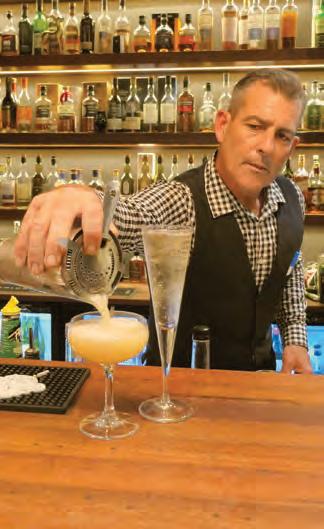
Following morning at Cape Leeuwin Lighthouse, we witness the meeting of the Indian and Southern Oceans. This remote location feels like the edge of the world.
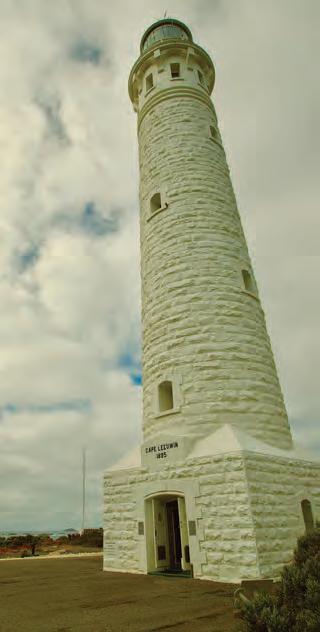
We also embarked on a captivating walking tour of Fremantle with the amiable Michael Deller from Fremantle Tours. It felt like exploring a new city with an old friend as he shared fascinating stories and anecdotes about Fremantle’s history. Here we learned about the city’s past and listened to captivating family tales passed down through generations. Experience the charm of Fremantle with Michael at www.fremantletours.com.au.
Olio Bello offers more than just luxurious safari–style glamping bungalows. Their Mediterranean Cafe Bistro and Farm Shop are popular among visitors. Here, you can find over 150 gourmet delights, including olive oil and organic beauty products made right on the premises. The highlight is their award–winning, organic, estate–pressed extra virgin olive oil, made from hand–picked and pressed olives on the same day for the highest quality. Immerse yourself in the world of Olio Bello at www.oliobello.com.
Walk into Luxury provides an exceptional opportunity to experience the best sections of the Cape–to–Cape Track in absolute luxury and comfort. Their boutique luxury walks combine the beauty of nature with gourmet food, wine, and exclusive accommodations. Immerse yourself in the splendour of the Cape to Cape Track with Walk into Luxury at www.walkintoluxury.com. But do ask for Nanna Anne!
...we venture south to Halls Head, eager to see the imposing Mandurah Giant. This woody sculpture, majestically crafted entirely from pallets, stands tall and proud amidst the coastal landscapeCottesloe Beach Sculptures by the Sea
We then visit Ampersand, a charming cottage and distillery, before embarking on a Beach & Forest Adventure with Graeme form Pemberton Tours.
The D’Entrecasteaux National Park, with its old–growth Karri Forrest, is majestic but the transcendent landscape of Yeagarup Dunes, the largest landlocked dunes in the Southern Hemisphere, is like stepping into the film, Lawrence of Arabia. As we hop out of the bloated Toyota, fellow tourist, octogenarian Pat, slides down a talc–soft dune as tall as a skyscraper before climbing back up again like a spider. Mrs Pictures and I exchange wide–eyed glances. Diets!!
In the evening, we dine at Jaspers in Pemberton, where I choose a steak so tender it brings me to the verge of tears.
The next day, we enjoy another delicious breakfast hamper at ‘and’ (i.e Ampersand) before heading to the Valley of the Giants in the Walpole–Nornalup National Park. This renowned tourist attraction offers a treetop walk among the magnificent Red Tingle trees. Supported by a web of steel, the walk sways a little drunkenly, while a
renovated ground walk allows for a closer encounter with these impressive giants.
Continuing our journey, we arrive at Dam at Raintree, a luxury cattle and hemp farm with an upmarket restaurant. Here we meet the lively Steve Birkbeck, who insists we try his farm–fresh Wagyu Beef. As we devour the meal, Steve shares his captivating life story, representing the spirit of the outback entrepreneur.
Next, we visit Albany and explore the National Anzac Centre, a remarkable museum where audio–cards guide us through the experiences of soldiers during World War I. The museum’s location overlooking the harbour evokes an eerie sense of the past, as we imagine the soldiers aboard ships, awaiting their fate. Alas, dinner awaits us at Liberte, a hip fusion restaurant at the London Hotel, offering a delightful blend of Parisian boho and Vietnamese flavours.
After a long drive back to Fremantle, a vibrant port city, we check into the Trade Winds Hotel on the banks of the Swan River. Despite a brief power outage, the staff remains calm and hospitable,
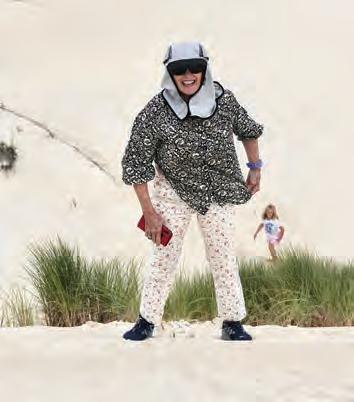

providing us with drink vouchers and directing us to the bar. We also enjoy a refreshing albeit slightly drunken swim in the hotel’s pool.
Our final dinner takes place at Emily Taylor, situated within the historic Warders Hotel. This unique Asian fusion cuisine complements the bohemian atmosphere of Freo, enhanced by tall limestone walls adorned with Mao–esque murals. The well–maintained roads and relaxed driving culture in WA make road trips in sandgroper country a breeze.




All common video tapes (subject to copyright) VHS, VHS-C, Video 8, Hi8, Digital 8, Beta, Mini DV can be transferred to DVD. Convert to USB for $10 extra for viewing on Smart TV and computer.

Bulk slide scanning with up to 80 slides transferred for $40. Add to or buy USB for sharing.









In-store film processing with choice of prints, scan and upload to dropbox and scan to USB.
Loose prints scanned or removed from album in bulk. Up to 200 for $99. Extras 25c each.
200 FOR
If you have had tapes transferred or made your own DVDs then they can be transferred to USB. $19.95 for one. Extras just $10.



Four or more includes the cost of the USB otherwise $15 extra.
Old movies (Standard 8, Super 8, 16mm) can be transferred to DVD. And then onto USB if required.
Bulk negatives can be printed and scanned. Whole rolls and cut rolls. To drop box or USB.


Passport Photos
(All countries including babies)
Funeral slide shows
(and photo enlargements)

Prints from negatives
Prints from slides
Copy prints from photos
Restoration of old photos
Creation of Photobooks
Old gear that takes up space in your
may still bring joy to another photographer. So don’t throw them out. Email or phone if equipment is bulky. No obligation valuations given with payment in 2-3 weeks.
Your old camera is worth even more if you intend to buy something else. Whether it is a camera or perhaps getting your tapes or slides transferred to DVD then you can qualify for the extra payment on your gear.


quadrupled the number of transfer stations to keep waiting times down.
The generations born in late 1940’s and the 1950’s have seen family history go from Brownie Box cameras to 35mm cameras with slides, then prints, and now to digital. In those years, films have also changed from early 8mm, Super 8 to various forms of tape and now to hard drives and removable media.
Each of these older forms of recording has rapidly evolved into the next leaving the family with boxes of slides, tapes, prints, negatives and older media cards. These generally take up space around the house and are in danger of being lost, particularly on the Coast, as mould eats its way through these precious records.
Camera House owner, John Ralph, has experienced this problem himself with damaged slides and tapes. This has motivated him to expand the services of the Fountain Plaza store, to provide increased archiving services with lower prices for bulk orders.
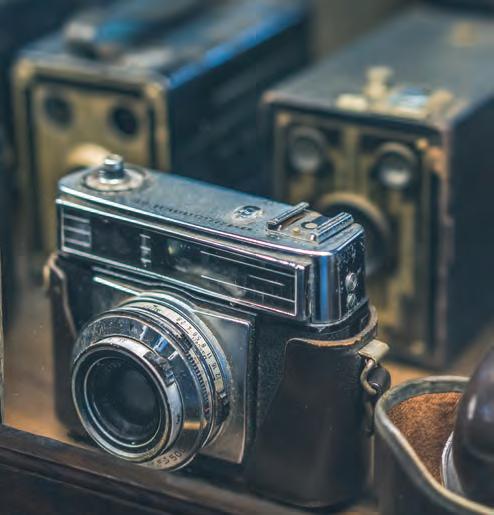
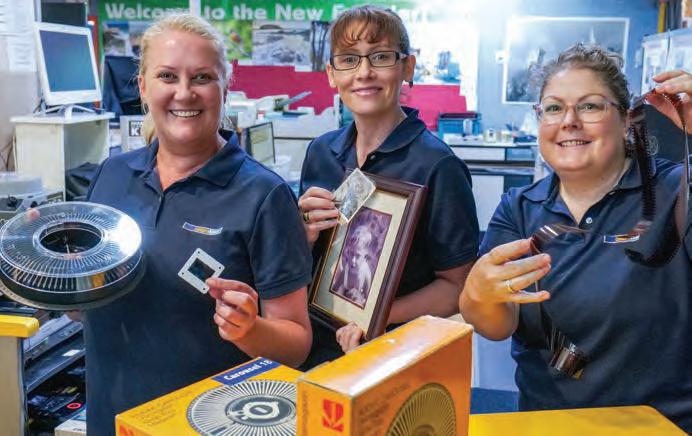
Slides are prepared in a carousel and then copied using modern digital equipment, sourced from overseas, giving higher resolution than previously commonly available. By customers filling the carousels themselves, the price is kept to a minimum.
Greatest popularity has been for transferring tapes to DVD and once digitized, conversion to files that can be stored on USB or computer and viewed on current Smart TVs. Tape conversion was so popular, during and after lockdown, that the store now has
People are finding that many older photos have been damaged through the years. Either damp and mould have allowed fungus to grow or exposure to light has caused the colours to fade. This has created demand for local restoration services. Pictures of all sizes can be improved. They are scanned or re–photographed and then digitally enhanced to fix colours, physical damage and even add or remove people and items from the final picture. The new picture can be enlarged from the original to produce wall art and canvases.
Frequent questions asked of the store involve film. “Do you sell film?” – Yes. “Do you develop film?” – also Yes. “Do you scan film to digital?” – Yes. Whilst film is harder to get nowadays the store
searches far and wide to keep stocks up. Also the in–store film developing is very popular especially with young people wishing to try out “Grandpas Camera”. The film can be developed and either printed or scanned to USB or Dropbox. And now with travel staring up again, the number one question that is asked –“Do you do Passport Photos?” – Yes. They are done in the in–store studio, from baby to adult, including all overseas passports and are generally ready in about 10 minutes.
A by–product of the lockdowns has been a greater focus on archiving family history in preparation for down sizing as Baby Boomers approach retirement. Camera House has responded by increasing their range of services.
So, getting a bit of help along the way is highly recommended.
We eat multiple times a day, every day of our lives, so the foods we eat have a huge effect on our we feel and how our bodies function or in other words, our mental and physical health.
Many people think that healthy eating should be easy, but in reality, healthy eating is not easy.
Eating is the most complex task we do daily. There are so many factors that influence what we eat, such as
Food likes and dislikes
Hunger and satiety regulation
Nutrients, hormones
Food knowledge: new science vs myths
Our relationship with food
Our mood and mindfulness
Social and cultural influences
Various skills such as meal planning, organisation, time management, cooking, shopping and gardening skills
Our health, age and stage of life requiring different nutrients
However, nothing worthwhile is ever easy. Working with a Dietitian is not just a once–off visit. It involves investing time and energy outside appointments and commitment to attend review appointments for reassessment, education, motivation and support over months to possibly years to see results you desire. Nutrition consults often get more spaced out over time, initially 2 weekly, then monthly, 2–3 monthly, then 6 monthly.
Most people think they know what they need to do. But, putting it into practise is where they need help, which is exactly what Dietitians are trained to help with. So, if you feel you need help with changing your eating habits, that is the perfect time to ask for it.
We also understand that addressing your eating habits can be an emotional journey, so please remember we are here to support you, not judge you, and will work with you as much or as little as you need.
An initial consult involves a nutrition assessment, receiving evidence–based
Opening hours
Monday to Friday 9am–4pm & first Saturday of every month 9am–12pm
nutrition advice and goal setting to help you put dietary changes into practice. Review consults assess your progress give you further support, motivation and education about how to make changes to your diet to help you reach your health and lifestyle goals.
Accredited Practising Dietitians practice medical nutrition therapy for a range of health conditions, which means that managing these conditions with dietary consultation is what the evidence says is the best management method either solely or in conjunction with other therapies.

We are specialists in fitting as well as providing comfort and orthopaedic footwear. We provide footwear for difficult to fit feet ~ in particular people with diabetes, arthritis, swelling and bunions as examples. We also provide a home visiting service and shoe modifications and repairs.
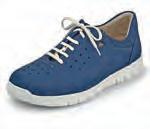


a large range of styles, widths & colours available

Keeping your diet in check with a Dietitian and getting tailored advice is the best thing you can do to look after yourself and feel great!
We eat multiple times a day, every day of our lives, so the foods we eat have a huge effect on our we feel and how our bodies function or in other words, our mental and physical health
BY CARIN CLEGG, ACCREDITED PRACTISING DIETITIAN
MANAGING:
Cardiovascular health: high cholesterol, high blood pressure, reducing risk of stroke, heart attack
Diabetes including gestational diabetes, insulin resistance and impaired glucose tolerance
Over–eating, comfort eating, sugar cravings
Malnutrition, reduced food intake, poor appetite, nutrition deficiencies
Gut health conditions: reflux, constipation, diarrhoea, diverticular disease, Irritable Bowel Syndrome (IBS), Inflammatory Bowel Disease (IBD)
Food allergies and intolerances
Coeliac Disease
Liver health and kidney disease
Cancer including assisting with side effects of treatment such as nausea, poor appetite, taste changes

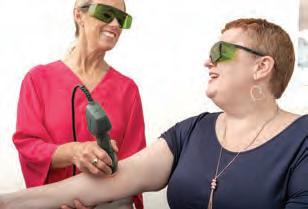
Polycystic Ovarian Syndrome (PCOS)
Osteoporosis
Fussy eating and restricted diets
Texture modified diets
Nutrition in pregnancy, breastfeeding
Vegetarian and Vegan Nutrition.
INCLUDE:
healthy eating, foods and nutrients to meet your nutrition needs
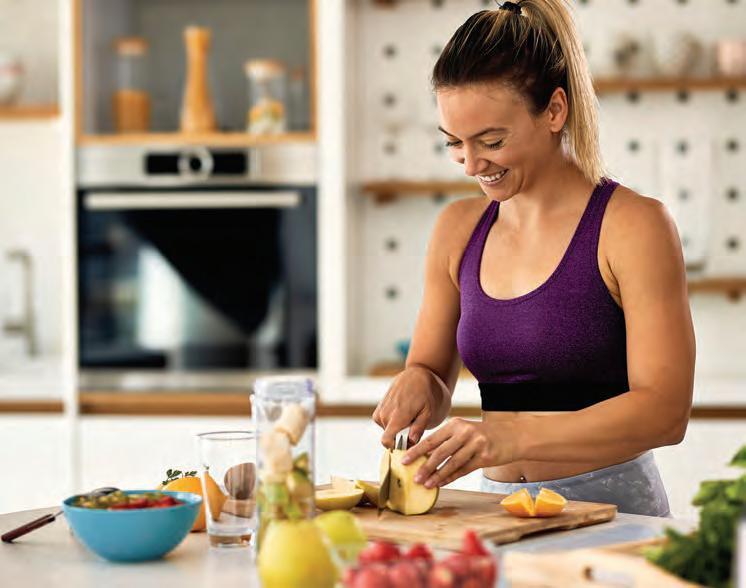
learning how food affects your health condition and what is best to eat
por tion sizes and portion control
label reading of food products
hunger and satiety management
tackling emotional or comfort eating and sugar cravings
meal planning
successful goal setting and action planning.
Keeping your diet in check is much easier, more enjoyable, rewarding, life–enhancing, as well as more time and cost–effective in the long term than managing chronic diseases such as heart disease or diabetes, which involve attending specialist appointments (cardiologists
etc) and taking medications. In fact, early dietary management will greatly minimise disease progression and the need for more medications if already diagnosed.
Whether it is beating your personal best in your sport, staying active and social, keeping strong and independent as you age, running after your grandchildren or managing your health conditions. You can make it happen and feel happy, healthy and vibrant with the right support.
Carin Clegg is the Director of Bright Diets and is a Paediatric Dietitian and Fitness Professional with an interest in environmental sustainability. Carin wants everyone to be clever about their eating to feel happy, healthy and vibrant! Contact Carin on 0407 492 278 or via www.brightdiets.com.au
Leading Central Coast private practice, Cancer Rehabilitation & Lymphatic Solutions, developer of the unique OncoLaser system using MLS Laser, offer patients a premium and comprehensive allied health rehabilitation centre, providing high quality services to aid in quicker and more effective physical rehabilitation recovery from surgeries, cancer treatment, sports injuries and other conditions. 02 4312 7033 / 5/30 Karalta Rd Erina NSW 2250



When flowers bloom in early September, the pollen count in the air significantly increases, and with that comes seasonal eye allergies.
An allergy is when our immune system responds to what it believes to be a threat. In an effort to fight against the threat, it releases chemicals (for example, histamine) that can make us feel unwell or uncomfortable. Usually, this response will kill the infection, and our immune system will return to normal.
If someone’s immune system cannot remove the threat, they will stay in this heightened state of discomfort and unease, also known as an allergic reaction.
Eye allergies are a common issue for many people, even more so for those who wear contact lenses. However, there are certain remedies you can perform at home in order to ease the discomfort.
Pollen or dust is a foreign threat for many people, and if their immune system is unable to remove it, then it overreacts because it continues to detect the threat but can’t eliminate it.
A reaction to pollen, dust or pets is known as hay fever and results in an inflammation of the lining of your nose, throat, eyes, and sinuses.
Hay fever is also known as allergic rhinitis, which has two types:

Seasonal allergic rhinitis – when symptoms happen at certain times of the year, such as Spring. Wind–borne pollen is the cause of seasonal hay fever, which usually occurs in the warmer months. The length of the pollen season depends on where you live and the plant species you are allergic to
Perennial allergic rhinitis – when symptoms occur at any time of the year. Dust mites and domestic pets are the most common causes of perennial rhinitis.
General allergy symptoms include sinus swelling, itchy nose, eyes or throat, skin rashes or shortness of breath. Symptoms can range from mild to severe and can affect your daily life.
Our eyes are very susceptible to being affected by allergies. Allergic reactions, including hay fever, can cause redness, itching, and swelling of the eyelids or make the eyes water.
If allergies are left untreated, they can cause further complications in your life, such as poor sleep, poor concentration and making you more being prone to
sinus and eye infections. Asthma symptoms can be exacerbated by allergic reactions.
Whilst the symptoms of eye allergies can be very disruptive and uncomfortable, many treatment options are easily accessible.
There are many different eye conditions that present in a similar way to allergies, so if you are unsure or if the following treatments do not work, it is best that you book in to see your Optometrist for a proper diagnosis so that the correct treatment can be given.

Antihistamines can be accessed over the counter and can provide temporary relief by switching off the body’s allergic responses for a few hours.
A hot compress heats the eyelids, and this warmth stimulates the glands to give relief from the tension and irritation of the eyes. A cold compress can be used to reduce inflammation and soothe the area in and around the eyes.
For anyone that experiences eye allergies, they can be heightened by poor eyelid hygiene. A lid scrub or lid and lash cleanser can be used to wipe and clean away allergens, such as pollen or dust, on the skin around the eyes, which could trigger localised allergic reactions.
Eye drops are an easy on–the–go solution to ensure that your eyes are well–lubricated throughout the day. Regular eye lubrication can relieve uncomfortable symptoms and help flush out irritants. Using an eyewash is also a thorough way to cleanse and remove any allergens at home.
Eye allergies cause many uncomfortable symptoms, making contact lens wear difficult for many allergy sufferers. Contact lenses can attract deposits such as spores, pollens, and dust, triggering and prolonging allergies. You may be tempted to shelve your contact lenses for the next few months and wear glasses instead.
While this is generally recommended if your eye allergies are severe, many contact lens wearers may be able to reduce their allergy symptoms by changing their contact lens routine.
Tips to alleviate eye allergy symptoms:
Disposable contact lenses – replacing your lenses daily eliminates any deposit accumulation concern
Clean lenses effectively – If disposable lenses aren’t an option, ensure you clean and disinfect them before and after each wear
Hydration – not only should you be drinking plenty of water throughout the day, but eye drops are very
Lock in the price today
helpful in replenishing the moisture in your eyes.
There are many different eye conditions that present in a similar way to allergies. If you are even the slightest bit unsure that your common eye allergy symptoms could be worse, it is better to be safe than sorry. There are some eye conditions with similar symptoms that can cause irreversible vision loss.
An eye examination with an Optometrist can provide a proper diagnosis so that the correct treatment can be given. This will significantly reduce the potential risk of sight–threatening complications and provide the fastest resolution of your symptoms.
This article is intended to promote understanding of and knowledge about general eye health topics. It should not be used as a substitute for professional advice, diagnosis or treatment. Always seek the advice of your health care professional prior to incorporating this as part of your health regimen.
Book an appointment at one of many offices or in the comfort of your home with one of our mobile representatives.
Book an appointment at one of many offices or in the comfort of your home with one of our mobile representatives.
376 The Entrance Road, Erina Heights
376
14 Mingara Drive, Tumbi Umbi
2 View Point Drive, Toukley
Document
Document your wishes
Regular eye lubrication can relieve uncomfortable symptoms and help flush out irritants
For someone living with dementia, particularly in the early and mid–stages of the condition, there really is no place like home. Being in a familiar environment helps prevent confusion and disorientation, which helps the person to feel safe and secure as well as enabling them to maintain their independence with the highest quality of life.

Now more than ever, it’s important to remember that home help remains a wonderful solution to what is unmistakably a very complex problem for all involved.
Researchers from Johns Hopkins Medicine in the US found that “keeping a loved one with dementia at home helps them be happier and live longer”.
A scientific study in Germany comparing the outcomes of people who lived at home with dementia, versus those with the condition in aged care facilities, found that “patients in senior citizens’ homes had a higher relative dying risk of around 53.1%, than those cared for at home”.
US aged care expert Carol Bradley Bursack says the biggest advantage of home care is that it allows people with dementia to remain in their own homes for as long as possible.
“This option is far less disorienting for a dementia patient than a move to an assisted living facility, a memory care unit or a nursing home,” Ms Bradley Bursack says.
“Familiar environments offer a great deal of security and peace of mind for individuals with memory issues.”
By making a few adaptations in the home, it can help someone living with dementia to maintain their independence to perform daily tasks. Consider the following home modifications:
Avoid patterns on carpet, wallpaper, tablecloths, bedding or furnishings as these can be confusing, try to stick to plain colours
Use contrasting colours for floors, walls, and furnishings, to help identify them
Place frequently used items in the line of sight and at an accessible height
Group common items together. For example, group tea, coffee, sugar, and mugs in the kitchen. Group a toothbrush, toothpaste, mouthwash, and dental floss in the bathroom
Use transparent canisters and label them. Use labels on cupboards or replace solid doors with transparent ones, to view items easily.
Consider using contrasting colours for items in table settings (such as place mats, plates, tablecloths and glassware) to help identify them
Have games, jigsaw puzzles, and photo albums available and set up areas for meaningful activities, favourite hobbies or pastimes
Use block-out curtains or blinds to regulate sleeping patterns and prevent shadows on windows from trees and shrubs outside
Labelling drawers and cupboards to identify items may help or removing wardrobe doors to view items easily. With a few adaptations, there are many ways that someone living with dementia can continue to live independently in their home, especially with the support of a home care provider.
But exactly what are the home care options for a loved one with dementia? There are many, depending on your family’s needs and requirements. Home Instead can provide anything from one or two home visits a week all the way to around–the–clock care. The right home care provider will be able to adapt the care required as your loved one’s needs progress.
In addition, the government offers subsidised care to help people over 65 to remain independent in their own homes and can provide services such as meal preparation, domestic help, transport to outings or appointments, and bathing/hygiene. If someone is living with dementia, they may be eligible for The Commonwealth Home Support Programme (CHSP) or for a Home Care Package (HCP) which is designed for those with more complex care needs. You can also access similar services through a private care provider.
Relationship–based care is at the heart of the services that Home Instead provides, with highly trained CAREGivers able to support someone living with dementia. In addition, we place huge importance on the continuity of the same CAREGivers to help build amazing relationships with our clients, and this is especially valuable for someone living with dementia as it helps to provide familiarity and enables the CAREGivers to develop knowledge about their background and routine.
Home Instead can review your family’s individual needs and offer a solution that works for you all.
Caring for a loved one can be very rewarding but it can also be challenging; it may be physically demanding and may
be emotionally exhausting. When caring for someone living with dementia, it can also be distressing to witness changes in behaviour that may occur as the condition progresses. For some carers, this may lead to exhaustion and feeling overwhelmed by the situation, sometimes referred to as compassion fatigue.

Taking small and regular breaks from the role of caring can help prevent compassion fatigue. However, it’s often easier said than done. Family carers are especially at risk of exhaustion and utilising specialist residential care or home care for their loved one living with dementia, even temporarily, can provide much–needed respite services for the family carer. In–home respite can provide support at short notice for as little as a couple of hours, for a few days or even longer. The options are flexible and allow family carers the opportunity to plan and take some valuable time out.
A common issue for people living with dementia in assisted care facilities is that they often tell carers they want to go home. Despite deterioration in the short–term memories of people with dementia, many remain painfully aware that they are no longer in their normal surroundings.
The Alzheimer’s Society in the UK has even addressed this issue by compiling a list of things for professional carers to say
to dementia patients who repeatedly ask to go home.
Advice on their website states: “It is not uncommon for a person with dementia in residential care to say they want to go home… (it) can be distressing for everyone. The desire to go home is probably the same desire anyone would have if we found ourselves in a strange and unreasonable place.”
Certainly, one of many important goals when caring for someone with dementia is to prevent causing them extra distress. So, it makes sense to keep them living at home, in their own familiar and comfortable surroundings, for as long as possible.

At the heart of the matter though, is the best interests of the person at the centre – your loved one with dementia. There’s strong evidence they’ll be happier and healthier for longer, being cared for at home.
For more information on our care services, including dementia care, contact our local Home Instead Central Coast & Newcastle office on 02 4342 3477 or email care@homeinstead-ccn.com.au | homeinstead.com.au
Home Instead is a specialist, national provider of high–quality, relationship–based, in–home care for older Australians. We help with a range of personal and lifestyle needs while providing welcome companionship. Our services include assistance with personal care, light household duties, meal preparation, medication reminders, and transport to appointments, shopping and social outings. We take personal responsibility for providing the best in–home care and support to meet our clients’ needs and are committed to addressing the individual and national challenges of Australia’s ageing population.
low, stressed or anxious?
MindSpot’s Wellbeing Plus Course can help. Depression and anxiety can affect our quality of life. Even the simplest tasks may feel overwhelming. The Wellbeing Plus Course can help you manage your symptoms and learn key skills to improve your confidence. Designed for adults aged 60 years or older, this free and clinically-proven course is available online with optional support from a qualified therapist.
To find out more, visit mindspot.org.au or call 1800 61 44 34
Taking small and regular breaks from the role of caring can help prevent compassion fatigue. However, it’s often easier said than done
Grandma Barbara shows her ingenuity in beating a problem with trichotillomania
Barbara was a very spritely grandparent who filled her grandchildren’s lives with joy. Her house was always busy and smelt good and appetising. Whenever the grandkids were over, they’d make cakes or brownies – and when her vegan daughter was visiting, Barbara would make a chicken veggie pie for those meat–deprived grandkids! Every reader would have had, or wish they’d had, someone like Barbara in their childhood.
But one particular grandchild had her worried. Young Olivia was a gorgeous four–year–old, very bright and well–adjusted, but she suffered from trichotillomania! Olivia had become an involuntary hair–puller! She would put her left hand over her head to twirl her hair into a single strand and then pull it out. Olivia only did it when she was tired or in bed while she sucked her thumb. As her hairline started receding from over her right ear, Olivia kept following it, and the bald strip above the right ear became more obvious.

With someone having a stroke every 19 minutes in Australia, Central Coast Local Health District (CCLHD) is encouraging people to learn the FAST signs of stroke and the best ways to prevent it.
CCLHD Neurologist/Stroke Staff Specialist Dr Bill O'Brien said National Stroke Week (7–11 August) was an opportunity to not only remind people of the signs to look out for, but also the importance of seeking help immediately if you notice the signs in yourself or someone else.
“The key is the think FAST. Has their face drooped (F), can they raise their
Her parents had talked to her about it and had tried Rescue Remedy, thinking it was a stress thing. They had reminded her, cajoled her, and even tried a sharp “Ah, ah” when they caught Olivia doing it in front of the TV. They had even changed her hairstyle to try and hide the erosion, all to no avail.
But they hadn’t tried grandma’s ingenuity! Among her many talents, Barbara was also a great knitter, so she and I got our heads together to solve this family crisis! We knew that Olivia loved Santa, and Barbara decided to exploit that opportunity as we headed towards Christmas. She made a special bonnet for Olivia to wear to bed. This bonnet, which was held in place with bobby pins, not only had Christmas colours but also had Rudolph’s red nose sewn onto the top of the bonnet as a pom–pom.
Grandma had convinced Olivia that the other reindeer were looking where to deliver presents and were attracted to Rudolph’s red nose, so if Olivia wore the bonnet every night, the reindeer would know where to call. Olivia’s parents also put the yukky nail–bite deterrent on Olivia’s thumb to try and get a disconnect between the automatic thumb sucking when tired and the hair pulling. The combination worked wonders, and Olivia followed grandma’s brilliant scheme.
arms (A), is their speech slurred or confused (S)? If you notice any of these signs, time is critical (T), call triple zero (000) straight away,” Dr O’Brien said.
“The sooner someone who is having a stroke receives medical attention, the better the outcome is likely to be. When a stroke strikes, it attacks up to 1.9 million brain cells per minute, which is why every minute counts.
“Delaying or failing to seek urgent help for stroke can lead to ongoing disability or death.”
The good news is that more than 80 per cent of stroke can be prevented.
“You can change many of the common risk factors and lower your chance of stroke with some simple steps,” Dr O’Brien said.
“Staying active, eating well, quitting
And Barbara enjoyed the exercise too. Barbara’s motto was, “We’re never too old to enjoy our childhood!” Grandparent, she may have been biologically, but in her heart, she was still the wondering child, loving the joy of Christmas.
By the way, Barbara said the trickiest part of the operation was answering Olivia’s question, “But Grandma, wouldn’t the reindeer know to come to our house when they saw our Christmas tree?”
“Oh no,” she retorted, “It’s Rudolph’s red nose that attracts them”. And Olivia, aged 4, let Barbara get away with that reply because Nana was perfect!
So, what’s the message? If you want to get on well with kids, think like a kid.
Robert Brault is reputed to have written these words, “Today, I bent the truth to be kind, and I have no regret, for I am far surer of what is kind than I am of what is true”.
I like this story and I like the message, but most of all I like Barbara. She’s the sort of spritely Grandma every child deserves to have in their life. “We don’t stop playing because we grow old. We grow old because we stop playing.” George Bernard Shaw.
“80 Stories High” is an uplifting collection of short stories about ordinary people doing ext raordinary things for those they love. They are from the memoirs of Dr John Irvine, one of Aust ralia’s most heard, read and seen Paediatric Psychologists.
smoking and limiting your alcohol intake are some of the steps you can take to stay well and decrease you chance of stroke.
“I also recommend people make an appointment to see their doctor about the risk factors of stroke including high blood pressure, type 2 diabetes, high cholesterol or atrial fibrillation or irregular pulse. It is important to have these conditions well managed to lower your risk.”
To find out more visit: www.strokefoundation.org.au
 BY JESSICA SANFORD
BY JESSICA SANFORD
I met Valerie Derry in 2021 when we joined the same writing group. The group met to read and discuss writing. Valerie’s poems were wonderful – emotive and thought–provoking. This month I’m reviewing a book by Valerie, a selection of self–help options for people in grief, The Gallery of Loss.
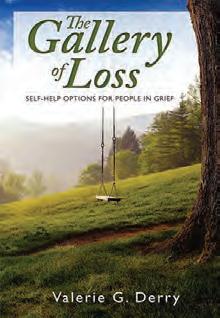
In 2019 Val lost her son to cancer. After the news that the illness was terminal, she cared for him daily and ensued his comfort. Instead of curling into a ball and giving up, as would have been her right to do, while enduring the worst possible sadness, she took note of practical, daily processes to manage grief one day at a time. This book is an outline of those processes. But it’s more than
that. The guide is weaved with poetry –a salve for the soul – written by Val, who has used her creative talents to ease her anguish.
When I read The Gallery of Loss I cried, of course. It deals with immeasurable sorrow. However, I was also uplifted. The Gallery of Loss provides awareness and hope. Chapter 1 is titled, The first realisation that death is near – how to respond. It outlines achievable goals to follow that may ease the unknowingness of the early days and beyond. For instance, treat each day as a lifetime and take one day at a time. By thinking about each day as a whole – with a beginning, a middle and an end – and talking about your day in the evening, you will learn to cherish each moment, making your time seem to last longer. Also, forward thinking about days in advance may be too overpowering when it comes to your calendar of appointments and challenges. One day at a time will limit this overwhelm.
The book includes meditation and practical information about the positive power of the mind and daydreaming. It offers advice on dealing with health professionals, talking about death with loved ones and coping with the future.
In one instance, Valerie demonstrates how writing helped with her feelings of remorse over forgetting her son’s shoes for his burial. In what I found to be one of the most moving parts of the book, Valerie describes this moment and includes a poem she penned to help process her guilt, titled Even in Winter
“…he now strides through heaven with bare feet, dabbling his toes in the clear streams and gathering gold–dust on his ankles, just as he wanted to in life…”
In her forward Valerie says,
“I hope that in reading this self–help guide, the personal accounts here can help some of you who are struggling with events and people that may seem surreal. Writing down our experiences is therapy in itself and even if you don’t like expressing your feelings in words, doing so can bring healing and peace.”
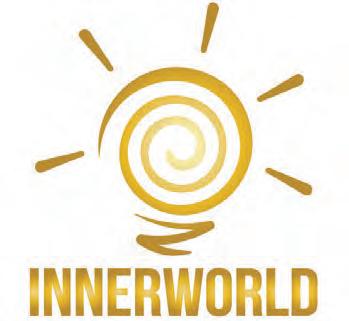

V.G. Derry is a retired English teacher who has published a variety of poems in Australian magazines since the nineteen nineties. She lives on the Central Coast.
This special eBook edition is offered by the author at no cost to the reader.
Go to the following link to download. www.vividpublishing.com.au/ thegalleryofloss
Jessica Sanford is a writer living on the Central Coast. She has a passion for literature and writes fiction and non–fiction. Jessica was the winner of the Wyong Writers’ 2021 Short Story Competition and has also been longlisted for the Furious Fic tion prize. She’s currently working on a novel set in rural NSW. https://jessicasanford.com
In 2022, an average of 440 Australians were diagnosed with cancer each day.1
Emergency doctor Ash Bowden, also known as Doctor Do More, aims to tackle this statistic one step at a time by calling on all Australians to join his annual step challenge.

#MoveAgainstCancer encourages participants to join up in teams and track their steps throughout September. Improving our step count not only benefits our physical and mental health, but exercise shown to lower a person’s risk of 13 types of cancer, some more than a 20%, including colon, breast, endometrial, oesophageal, liver, lung, stomach, kidney, head and neck, rectal and bladder. 2,3

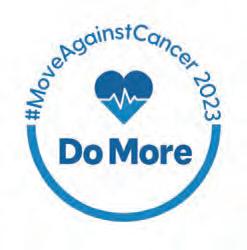
“Moving more has unbelievable benefits on your health – reduced risk of cancers, reduced risk of cardiorespiratory disease, improved cognition and more. Importantly, it has a huge impact on our mental health, something we all need right now.
“The pandemic and current financial climate have caused much stress and anxiety. With rising interest rates, people tend to cut ‘luxury’ spending and exercise is often seen as this. Getting outside and staying active can safeguard our mental health, helping us to stay positive as we move forward,” says Dr Bowden.
Cancer Council suggests up to one hour of moderate activity a day, such as a brisk walk, can reduce many cancer risk factors.
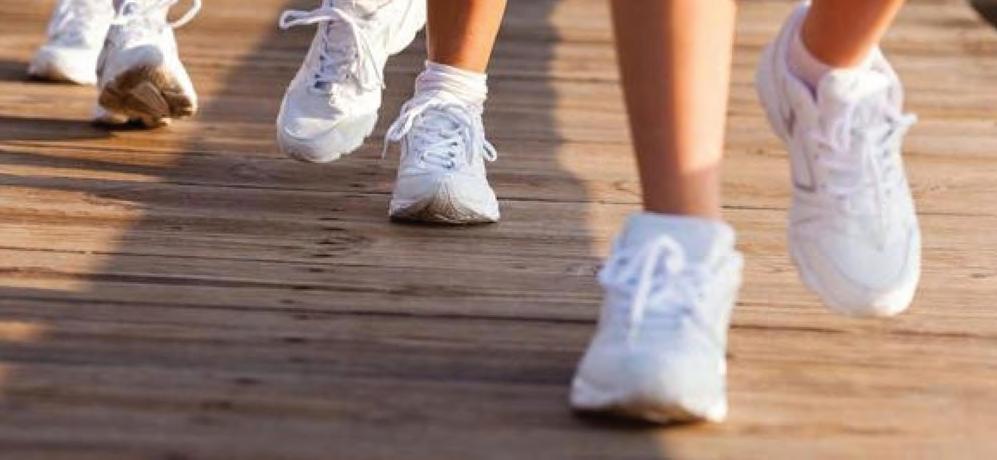
“It may seem like a small change, but it can have a profound impact on all aspects of cancer, from prevention to tolerating treatment to survivorship,” says Dr Bowden.
#MoveAgainstCancer
2023 is the fourth annual step challenge held by Dr Bowden, raising over $165k and involving over 2000 people. Dr Bowden says he wants participation this year to be the most it has ever been.
#MoveAgainstCancer 2023 is proudly sponsored by Smile On Clinics and Industree Group Australia among a handful of wonderful local sponsors. Register for #MoveAgainstCancer via this link: https://do-more.live/ moveagainstcancer2023/
“It’s such a simple, achievable challenge for people to participate in. When asked ‘How do I get more active?’ the best answer is to start with a walk.”
All fundraising raised by participants throughout the challenge goes to Cancer Council to ensure nobody faces a cancer diagnosis alone. The challenge starts on Wednesday, September 1st and will run to Thursday, September 30th. Registration is $10.
1 “Cancer,” Australian Institute of Health and Welfare, July 2022, www.aihw.gov.au/reports/australiashealth/cancer.
2 Gina DiPietro, “Exercise Can Lower Risk of 13 Types of Cancer,” Novant Health | Healthy Headlines, 2020, www.novanthealth.org/healthy-headlines/exercisecan-lower-risk-of-13-types-of-cancer.
3 “Physical Activity and Cancer Fact Sheet,” National Cancer Institute, 2020, www.cancer.gov/about-cancer/ causes-prevention/risk/obesity/physical-activity-factsheet.
I am sorry to hear your situation. It hurts and all get hurt by it in some way, eventually. This is a sad old story shared by mothers to daughters who become mothers and on and on down the line. There is a long history of absent and disappointing dads across the world who leave it to mothers to do 100% of the loving alone – AND – this must be always balanced with the reality there are even many more amazing, wonderful and present dads.
Unfortunately, I too am a child of a disengaged father and know how much it hurts when they miss out on your life and then later, the life of your children (his grandchildren). Most days I can be compassionate and forgiving of this because he shows up just enough and there is nothing that can really erase the love. As an adult I can see he is also the product of a sad old story too, passed down the line of family generations, that left scars and wounds and incomplete resources to emotionally heal.
I don’t know what the story and history your ex has, I can bet however, there is one. We all have one. And we all have choices to make on how we respond. Do we do our best and create a space for possibility and invitation into relationship (whichever way it can happen)? Or do we manage the risk and assess it is too much (and close the gate to protect the heart)? Both are legitimate options. Both
BY SARAH TOLMIEREADER QUESTION: “My ex–husband is unreliable with his contact with our children and grandchildren. I know Father’s Day is coming up. He hasn’t initiated any plans for the day. Should I try to make something happen, or just plan a day for the family myself?”
have consequences. Without knowing your situation more and the ages of your children – it is impossible for me to give direct advice.
All I can suggest is you ask some important questions, like “what is the outcome you want?” and “who are the intended recipients of the effect of the action you take”? The other words of counsel I pull out when I don’t have easy answers are: “What is the loving thing to do here”? “What would LOVE do”? Ask these questions for each of the key people and relationships involved. LOVE holds the wisdom.
I can see now in hindsight how my own mum facilitated and nudged the times of contact and lines of communication open with dad, and limited words of criticism. It helped create the times of connection and memories that are good. I am glad she did that. Dad is glad she did that. When left to my dad’s own capacity, it became a bit more of a mixed bag. A bit hit and miss. I was never fully insulated from the disappointments. I did however know I was loved. I got to experience so much more of my mum’s love than my dad’s, but I do know I have his love, and sometimes that is just enough.
Your children and grandchildren will likely also NOT be insulated from the disappointments – and I am sorry about that – but I am sure with a caring and thoughtful mum like you, they will
never get denied the love. Children just need the LOVE. Love exponentiates. Love amplifies. Love heals. Love creates. Remember, LOVE holds the wisdom.

Much love, Sarah x
Sarah Tolmie – Life & Love: Sarah is a marriage therapist, life & love and relationship coach, end–of–life consultant, an independent and bespoke funeral director and holistic celebrant. She provides holistic care, mentoring, guidance, healing and transformation for individuals, couples and families at their most important times of life & love – at end–of–life, in love & relationship, and in ritual and celebration. Sarah has a series of online courses – “Creating a Miracle Marriage. Online Course for Couples” and “How do you feel? Using the intelligence of our emotions to heal and be whole in Life & Love and “Landscapes of Life & Love and Loss. Traversing the pathways of dying, death and grief”. To find out more, visit sarahtolmie.com.au.

Join the Care2Prepare project today!



If you provide care for a family member or friend, live with disability, or are frail due to age this project is for you!
We are seeking participants in the Central Coast who would like personalised support to create a tailored disaster preparedness plan for your household and the people you care for.
While there’s always beauty to be found in the garden no matter the season, Spring would have to be the gardener’s favourite time of year. Some of our most beloved flowering plants begin to bloom, like roses, daisies, daffodils, petunias and magnolias, just to name a few. The edible garden also ramps up a gear in Spring, in response to the warmer temperatures and longer days.
Here in the nursery, we have the privilege of hearing from lots of different customers about their experiences in the garden. One of the areas we’ve noticed where people find the most satisfaction and the most frustration is in the humble veggie patch. Experienced gardeners and novices alike, we’ve all been on the rollercoaster of failure and success that is the edible garden; launching ourselves enthusiastically into the Spring veggie patch, warm sun on our back, visions of mountains of home–grown shiny red tomatoes in our head, only to have a pesky snail or caterpillar thwart all our efforts. Grrr!
Oh but there are many more moments of sweet success! As the calendar page flips over to September, we hope the following tips will encourage you to get
your hands dirty and try – or try again–for that home–grown harvest.
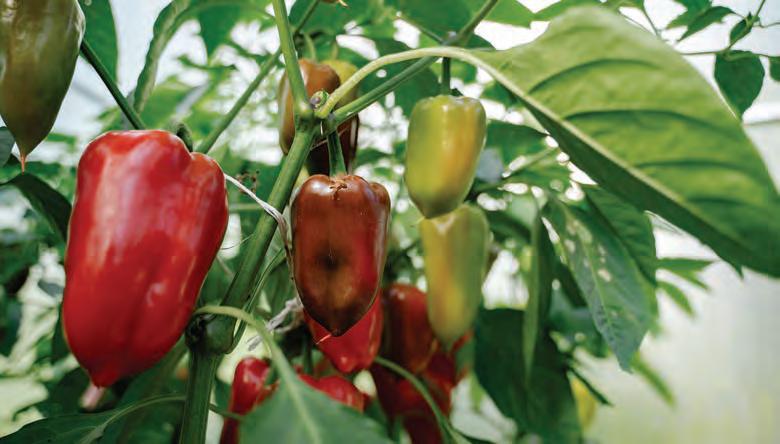
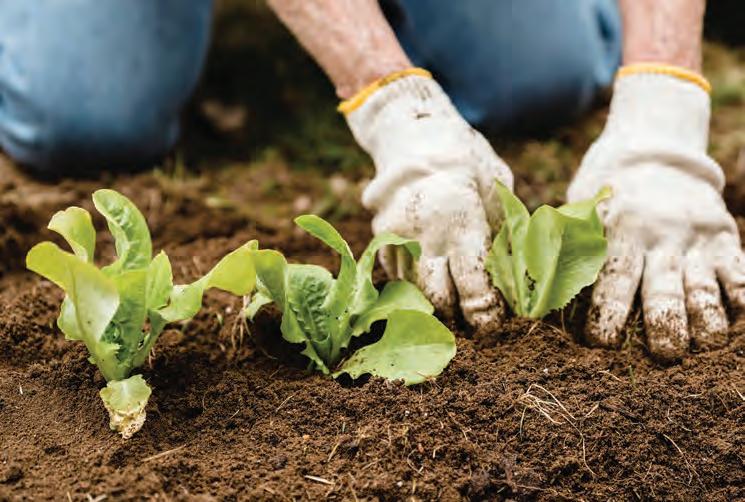
Preparing your soil is hands–down the most important step when starting or renewing a veggie patch. Edible plants use lots of energy while they’re growing, and they get this energy from the sun and the nutrients in the soil. Herbs and veggies growing in soil with added organic matter are stronger and better able to fight off those pesky pests and diseases when they strike. Preparing your soil also helps it to hold the right amount of water. Soil preparation can be as simple as adding a few bags of compost and cow manure to the soil each season before you plant, and mulching with sugarcane or lucerne afterwards. Searles 5–in–1 is an easy–to–use fertiliser that also improves the soil.
Paying attention to our plants is how we learn what’s healthy and what’s
not. Plants have ways of telling us what they need. After a season or two of spending just a few minutes a day with your edibles, you’ll have trained your eye to the difference between a thriving strawberry plant and one that’s in need of fertiliser. You’ll know what rich, healthy, moist soil looks like, as opposed to dry and depleted soil. You’ll even learn the difference between beneficial bugs and ones that will damage your precious plants. Lots of garden pests or diseases can be dealt with very quickly and easily if you ‘nip them in the bud’ (pun intended!). Catching pest or diseases when they’re just beginning in most cases makes them much easier to deal with, rather than when they’ve taken hold. Enjoy that quiet moment just looking at your plants and soaking up the beauty –and the message – in their detail.
If your first (or second, or third…) attempt at growing edibles wasn’t as successful as you’d hoped, don’t give up! Even seasoned veggie gardeners lose a plant or two to rabbits or snails, or find some plants do well one year and not so well the next – just ask your friend or neighbour and you might find it’s been a ‘bad year for cucumbers’ for them too. Sometimes a new edible garden doesn’t yield well in its first season, but once the added organics have worked into the soil the next season is a bumper crop! Don’t over think it, just prep your soil and have a go. To hear the ‘snap’ of crispy lettuce leaves picked fresh or see juicy strawberries ripening in the sun is to make the dance with nature worthwhile. We’re always here and happy to help with questions.
Happy gardening from the team at Burbank!

